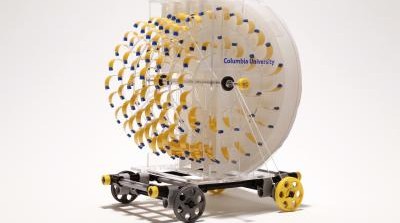Have you noticed that adding foam to the top of a coffee makes walking with it easier? Foam reduces sloshing in drinks and other liquids.
By Kate Stone
Most of us know that carrying a full cup of hot coffee can be precarious and just one wrong move could send a wave of java sloshing over the rim. But have you ever noticed that adding a bit of foam to the top of the coffee makes moving with it easier?
Scientists have found out why just a few layers of bubbles can significantly dampen the sloshing motion of liquid. However, investigating the effects of foam on fluid dynamics is about more than avoiding coffee spillage. The findings may have important industrial applications, including the safer transport of liquefied gas in trucks and propellants in rocket engines.
Energetic sloshing can be a serious problem in the transportation of hazardous liquids like oil and liquefied gas in large tankers. It can exert considerable pressure on the walls of a tanker, which can cause a rupture or lead to an explosion.
Emilie Dressaire, an assistant professor of mechanical and aerospace engineering at the New York University Polytechnic School of Engineering, first thought about using foam to transport liquids more safely while in a coffeehouse. While Dressaire was thinking about the foam on her latte, other scientists noticed a similar phenomenon with a different foamy beverage: beer.
“We were in a pub, and we noticed that when we were carrying a pint of Guinness, which is a very foamy beer, the sloshing almost didn’t happen at all,” says Alban Sauret, of the French National Center for Scientific Research (CNRS).

Fluid Dynamics and Foam
The scientists took their observations from the coffeehouse and the pub to the laboratory. They built an apparatus to test the damping power of foam more systematically using dishwashing foam. “The dishwashing foam is very stable, which allowed us to conduct the experiments without the bubbles disappearing,” explains François Boulogne.
The researchers experimented with two types of movements, either jolting the apparatus with a quick, side-to-side motion or rocking it steadily back and forth. They found that just five layers of foam were enough to decrease the height of the waves by a factor of ten.
To be effective, the bubbles have to touch the sides of the container holding the liquid. The foam dissipates the energy of the sloshing liquid through friction with the sides of the container. More than five layers of bubbles did not add much additional damping, because the top layers of foam didn’t really move.
The authors hope their research on foam may one day lead to cheap and easy ways to transport large amounts of fluids without the danger of excessive sloshing. “The potential applications are much bigger than just beer,” Sauret says.
This research is reported in the journal Physics of Fluids, published by the American Institute of Physics.




